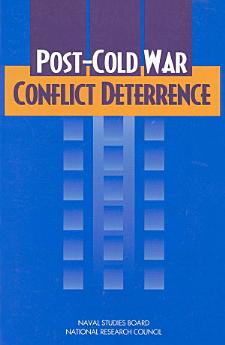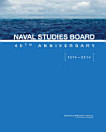Post-Cold War Conflict Deterrence
Naval Studies Board · Commission on Physical Sciences, Mathematics, and Applications · Division on Engineering and Physical Sciences · National Research Council
апр. 1997 г. · National Academies Press
Электронная книга
219
Количество страниц
reportОценки и отзывы не проверены. Подробнее…
Об электронной книге
Deterrence as a strategic concept evolved during the Cold War. During that period, deterrence strategy was aimed mainly at preventing aggression against the United States and its close allies by the hostile Communist power centers--the Union of Soviet Socialist Republics (USSR) and its allies, Communist China and North Korea. In particular, the strategy was devised to prevent aggression involving nuclear attack by the USSR or China. Since the end of the Cold War, the risk of war among the major powers has subsided to the lowest point in modern history. Still, the changing nature of the threats to American and allied security interests has stimulated a considerable broadening of the deterrence concept.
Post-Cold War Conflict Deterrence examines the meaning of deterrence in this new environment and identifies key elements of a post-Cold War deterrence strategy and the critical issues in devising such a strategy. It further examines the significance of these findings for the U.S. Navy and Marine Corps. Quantitative and qualitative measures to support judgments about the potential success or failure of deterrence are identified. Such measures will bear on the suitability of the naval forces to meet the deterrence objectives. The capabilities of U.S. naval forces that especially bear on the deterrence objectives also are examined. Finally, the book examines the utility of models, games, and simulations as decision aids in improving the naval forces' understanding of situations in which deterrence must be used and in improving the potential success of deterrence actions.
Post-Cold War Conflict Deterrence examines the meaning of deterrence in this new environment and identifies key elements of a post-Cold War deterrence strategy and the critical issues in devising such a strategy. It further examines the significance of these findings for the U.S. Navy and Marine Corps. Quantitative and qualitative measures to support judgments about the potential success or failure of deterrence are identified. Such measures will bear on the suitability of the naval forces to meet the deterrence objectives. The capabilities of U.S. naval forces that especially bear on the deterrence objectives also are examined. Finally, the book examines the utility of models, games, and simulations as decision aids in improving the naval forces' understanding of situations in which deterrence must be used and in improving the potential success of deterrence actions.
Оцените электронную книгу
Поделитесь с нами своим мнением.
Где читать книги
Смартфоны и планшеты
Установите приложение Google Play Книги для Android или iPad/iPhone. Оно синхронизируется с вашим аккаунтом автоматически, и вы сможете читать любимые книги онлайн и офлайн где угодно.
Ноутбуки и настольные компьютеры
Слушайте аудиокниги из Google Play в веб-браузере на компьютере.
Устройства для чтения книг
Чтобы открыть книгу на таком устройстве для чтения, как Kobo, скачайте файл и добавьте его на устройство. Подробные инструкции можно найти в Справочном центре.








